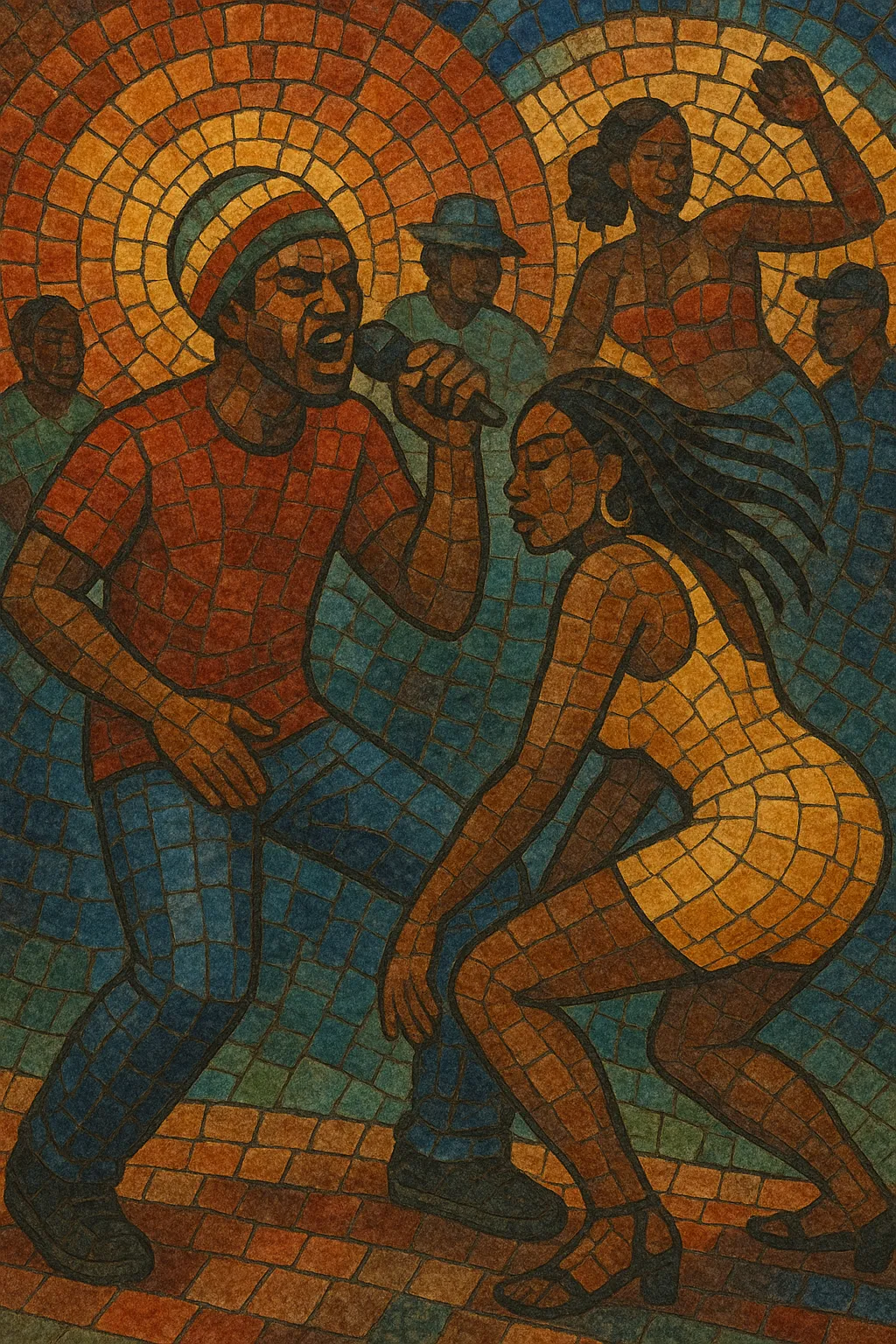Bashment soca is a Barbadian-born variant of soca that fuses the high-energy party Spirit of Crop Over with the grit and vocal delivery of Jamaican dancehall. Compared with power soca’s fast tempos, bashment soca typically runs slower and heavier, leaning on booming sub‑bass, minimal chord movement, and infectious, chantable hooks.
The style foregrounds Bajan dialect, cheeky wordplay, and call‑and‑response crowd interaction. Tracks are often built on shared riddims, encouraging multiple vocal takes, remixes, and sound‑system style performances. The result is a raw, street‑level party music tailor‑made for “wuk up” dancing and road marches.
Bashment soca emerged in Barbados out of the long dialogue between Trinidadian soca and Jamaican dancehall. While Bajan artists had blended soca with dancehall since the 1990s, the sound crystallized as a recognizable, locally branded style during the 2010s, when producers and deejays began favoring slower, bass‑forward riddims and distinctly Bajan lyrical delivery.
The Crop Over festival served as a crucial incubator, with DJs road‑testing new riddims on trucks and in fetes. As the scene grew, “bashment” became a shorthand for the island’s raw, dancehall‑leaning soca. Media support, dedicated riddim projects, and party circuits around St. Michael and other parishes gave the sound a firm home base.
By the mid‑2010s, the genre had enough momentum to justify dedicated competitions and showcases during the Crop Over season, solidifying bashment soca as a parallel lane to groovy and power soca. Viral tracks and dance challenges helped push the sound across the Caribbean diaspora, especially to the UK and North American Caribbean communities.
In true Caribbean sound‑system fashion, producers circulate shared riddims, while multiple artists voice different songs over the same instrumental. This keeps dancefloors supplied with variations on a proven groove and encourages friendly rivalry, dubplate culture, and rapid, seasonal output tied to Carnival calendars.
Bashment soca is now a staple of Barbados’ musical identity. It coexists with other soca substyles while maintaining a unique identity rooted in Bajan slang, dancehall cadence, and bass‑heavy production designed for fetes, trucks, and street parades.


